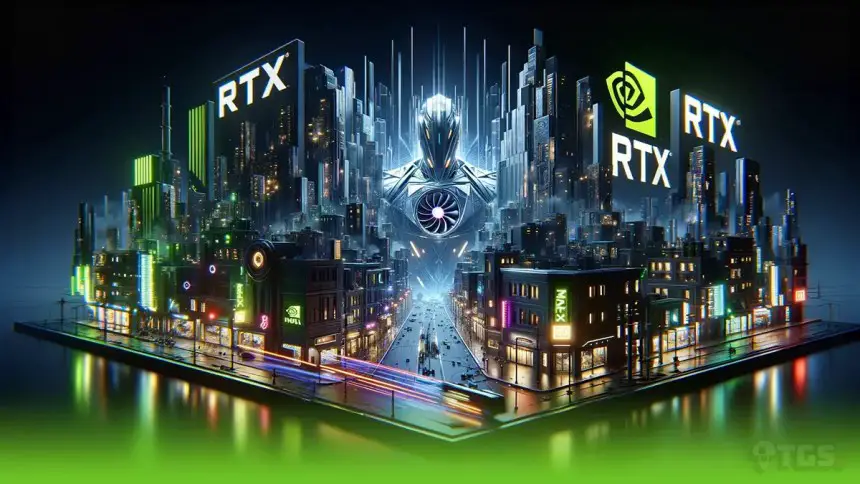Considered a milestone in graphics processor technology, RTX Technology is one of NVIDIA's most innovative initiatives. This article aims to detail what RTX technology is, how it has evolved, and what impact it has made in various areas where graphics processors are used.
RTX Technology Origin and Development
NVIDIA has shaped the industry for many years as one of the leading companies in graphics processor technology. The origins of RTX technology are based on NVIDIA's deep research and development work in this field.
NVIDIA's History in Graphics Technology
- By the late 1990s, NVIDIA had become a major player in the GPU (Graphics Processing Unit) market.
- In the early 2000s, it revolutionized gaming graphics with the GeForce series.
The Emergence and Development Process of RTX
- RTX was first announced in 2018. This was the first commercial GPU series capable of real-time ray tracing.
- The RTX series represents a transition from traditional rasterization-based rendering to ray tracing-based visualization.
RTX Technology Key Features
The RTX series focuses on two key features that are revolutionizing gaming and professional graphics processing: Ray Tracing and AI-powered rendering.
Ray Tracing
- Definition and Operation: Ray tracing simulates the interaction of light and shadows with objects. This creates extremely realistic visuals by mimicking real-world light behavior.
- Implementation in RTX: NVIDIA's RTX series stands out with its real-time ray tracing capabilities. This provides a more immersive and realistic experience in games and other graphics-intensive applications.
Artificial Intelligence (AI) Supported Transactions
- DLSS (Deep Learning Super Sampling): NVIDIA's DLSS technology optimizes performance while improving image quality using artificial intelligence. This produces high quality images from lower resolutions.
- Other AI Features: RTX cards also perform effectively in AI-based noise reduction, image enhancement, and many other processes.
RTX Technology Application Areas
RTX technology has expanded the use of high-performance graphics processors to various areas. In this section, we will examine how this technology is used and the advantages it provides.
The Role of RTX in Games
- Real-Time Ray Tracing: Realistic lighting and shading in games has become possible thanks to RTX technology. This gives players a more immersive experience.
- Balance of Performance and Quality: DLSS balances high-resolution gaming with higher frame rates, so gamers don't compromise on both visual quality and smooth gaming experience.
Professional Graphics and Video Processing
- Accelerated Rendering: Graphic designers and video editors save time thanks to the rendering processes accelerated by RTX technology.
- Advanced Visual Effects: In cinema and animation, RTX allows more realistic visual effects to be created in less time.
Virtual Reality and Simulation Areas
- More Safe Virtual Environments: RTX technology creates more realistic environments in VR (Virtual Reality) and AR (Augmented Reality) applications.
- Simulation and Training: RTX provides more effective learning and experiences by increasing the level of realism and detail in training and simulation programs.
RTX Technology Future and Implications
The introduction of RTX technology has redefined the capabilities of graphics processors. This section examines the current impacts of technology on the industry and how it may shape itself in the future.
Impacts on the Industry
- Game Development: Game developers create richer visual experiences thanks to the advanced graphics features offered by RTX.
- Professional Graphic Design: In graphic design and video production, RTX speeds up workflows and delivers higher quality output.
Developments Expected in the Future
- Technological Innovations: Future versions of RTX technology will offer more advanced ray tracing and AI-powered rendering.
- Expanding Application Areas: The uses of RTX technology are expected to expand beyond gaming and professional graphics to areas such as medical and architectural visualization.
Long-Term Impacts on the Industry
- Democratizing High Quality Graphics: The widespread use of RTX technology will enable high-quality graphics to reach a wider user base.
- New Business Models and Creativity: This technology will stimulate the emergence of new business models and the development of innovative practices in the creative sectors.
RTX technology has significantly expanded the capabilities of graphics processors since it was introduced by NVIDIA. In this article, we examined the basic features of RTX technology, its application areas and its effects on the industry. With ray tracing and AI-powered rendering, RTX has transformed both the gaming industry and professional graphic design fields.
The future of RTX technology will not only be limited to improving existing applications; It will also expand into new creative and professional areas. These developments will continue to deliver exciting innovations for industry professionals and consumers alike. In conclusion, RTX technology is a revolution in visual computing, which will shape the technology world with long-term effects.
What do you think about this subject? Do not forget to share your thoughts with us in the comments section. For all our content The Gamer Station All Contents
The products discussed here have been independently selected by our editors. If you purchase something featured on our site, The Gamer Station may receive a share of the revenue.
The original language of the articles is Turkish. We broadcast in 18 different languages. If you see a wrong sentence or word in the content, please feel free to inform us in the comments!




